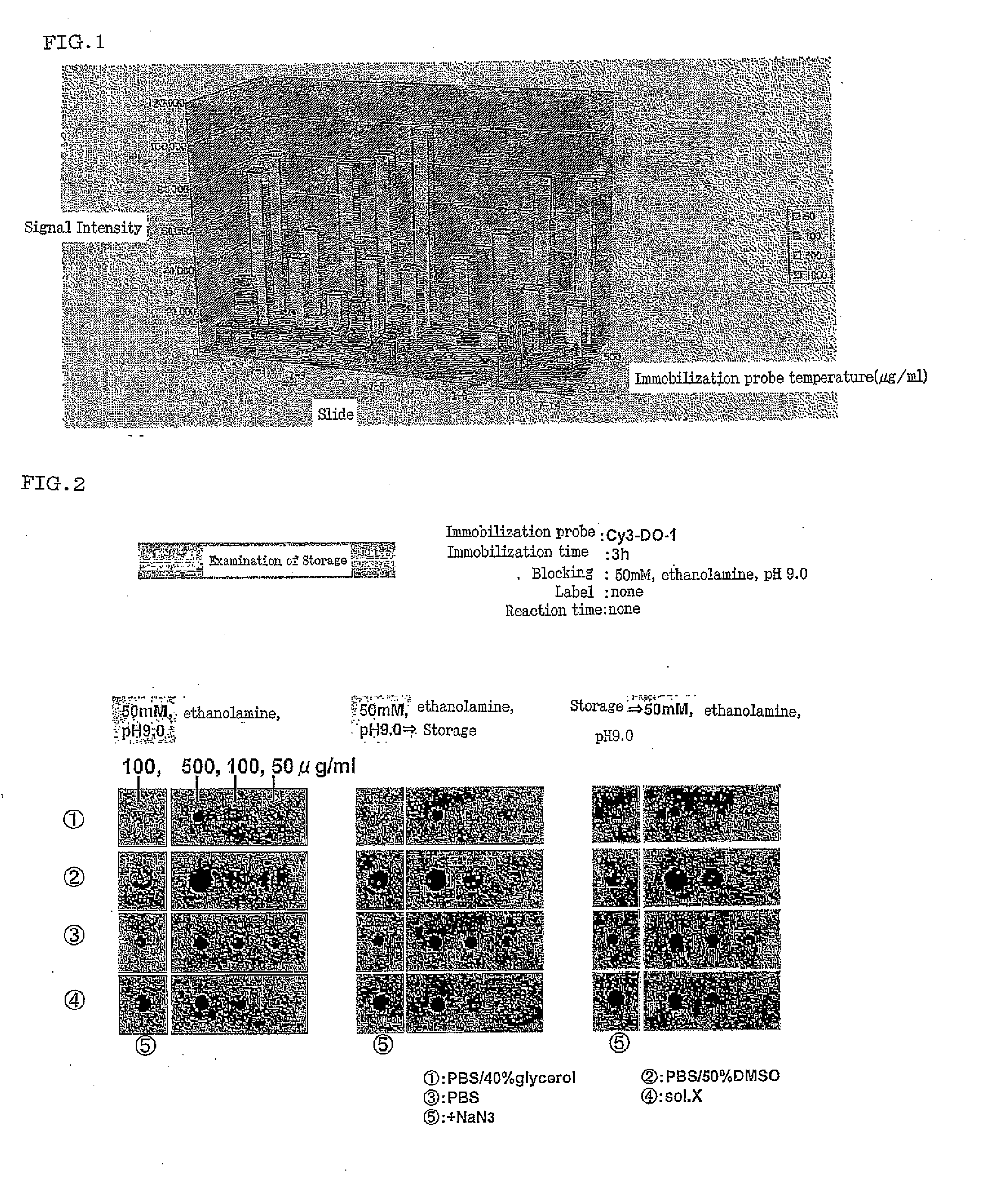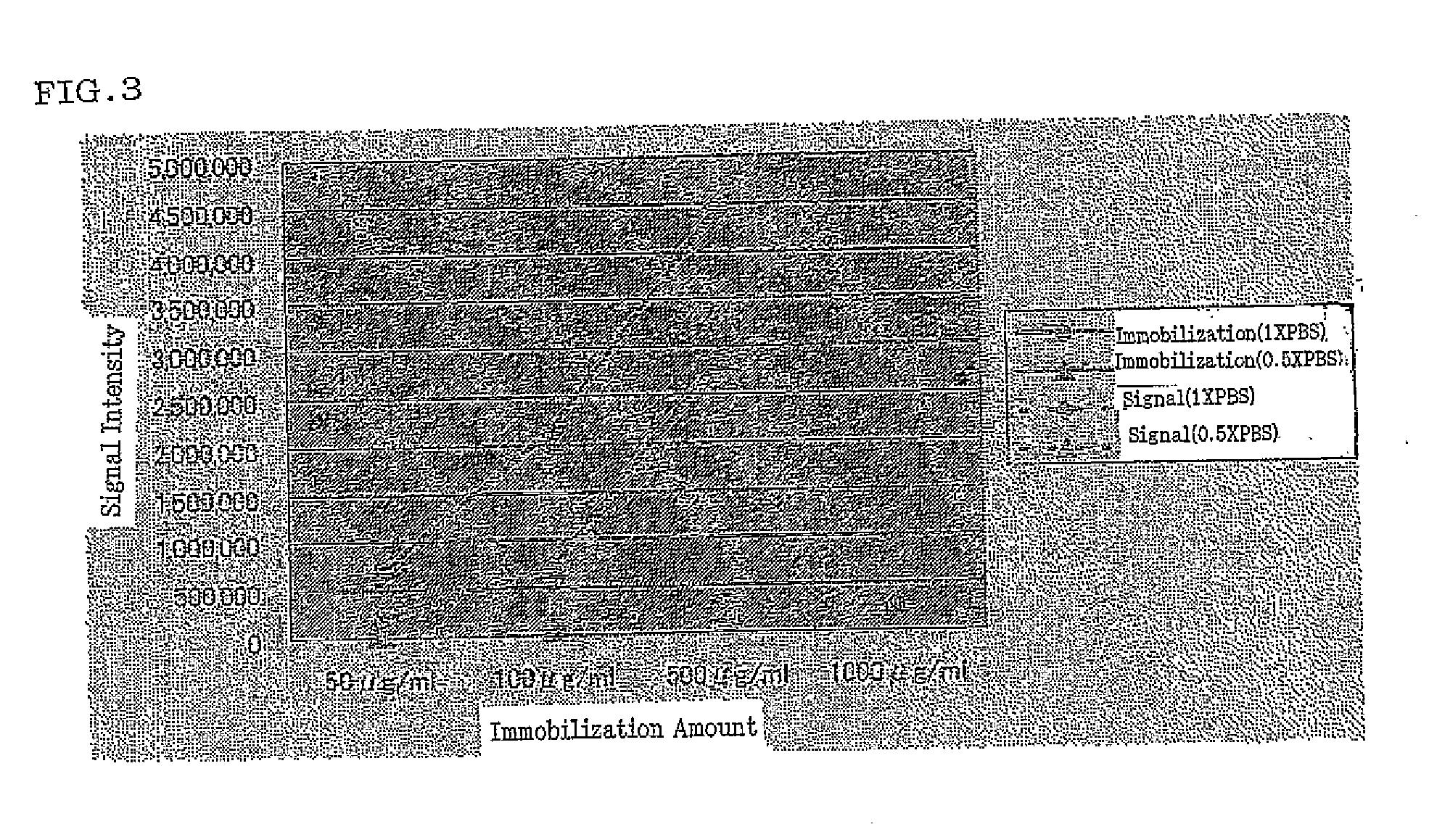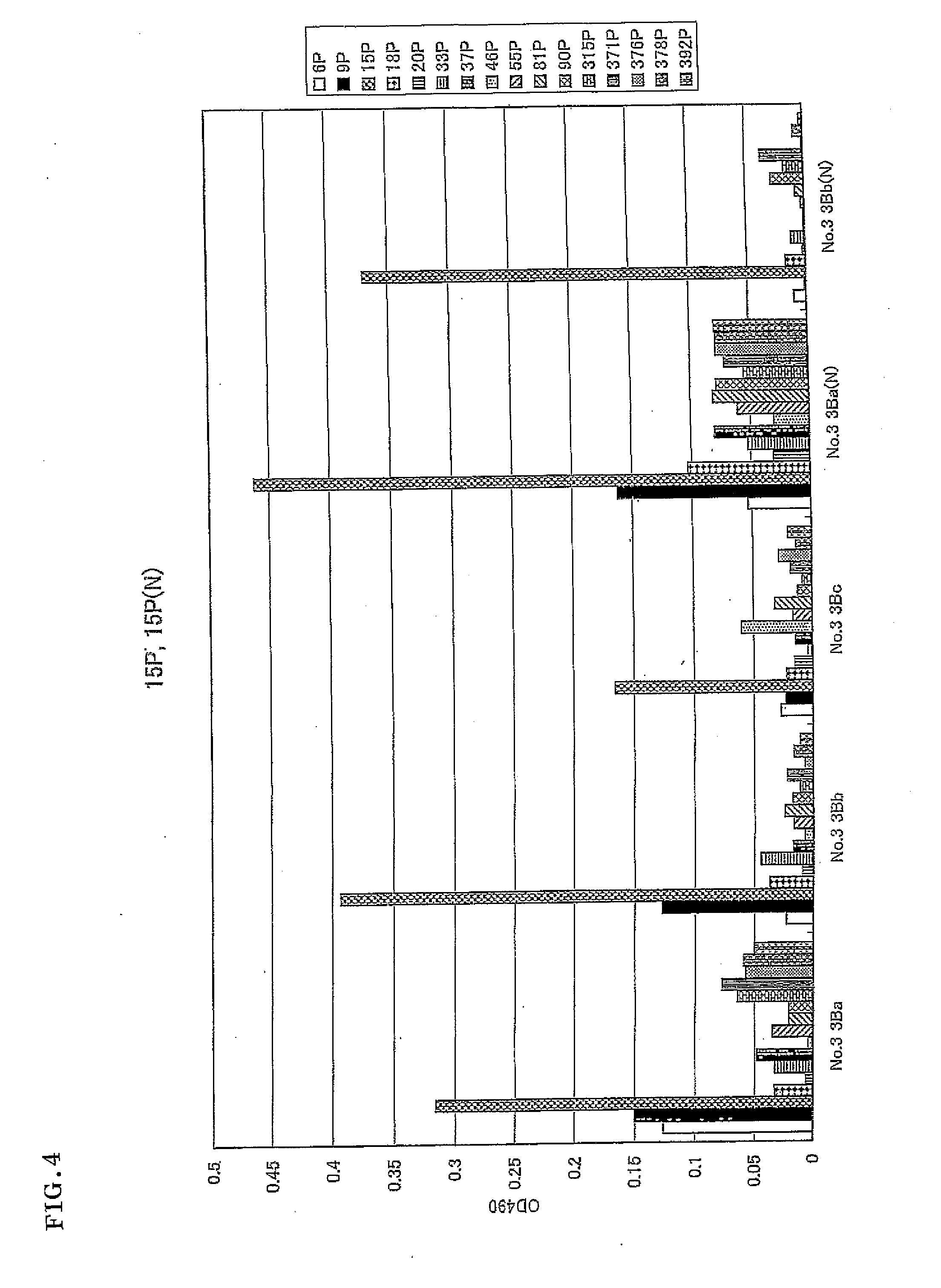Monoclonal antibody specifically recognizing modification site after translation of p53 and kit for assaying modification site containing the same
a technology of p53 and specificity, applied in the field of monoclonal antibody recognizing modification, can solve the problem that conventional methods and polyclonal antibodies cannot be said to be satisfactory in respect of specificity
- Summary
- Abstract
- Description
- Claims
- Application Information
AI Technical Summary
Benefits of technology
Problems solved by technology
Method used
Image
Examples
example 1
(1) Selection and Synthesis of Antigen Peptide
[0113]In the p53 protein consisting of 393 amino acid residues, peptide sequences each containing an objective modification site after translation of p53 were designed and synthesized. These peptides had cysteine added to the N- or C-terminal thereof, the N-terminal α-amino group of which was protected with an acetyl group. As shown in table 1 (in the table, Ac represents an acetyl group, S(P) represents phosphorylated serine, T(P) represents phosphorylated threonine, and K(Ac) represents acetylated lysine), the synthesized peptides are as follows: modified peptides consisting of amino acid sequences represented by SEQ ID NOS: 25 to 47 respectively, unmodified peptides consisting of amino acid sequences represented by SEQ ID NOS: 48 to 70 respectively (that is, peptides having the amino acid sequences represented by SEQ ID NOS: 25 to 47 respectively and being not phosphorylated or acetylated), and modified peptides consisting of amino ac...
reference example 1
(1) Examination of Various Conditions in Preparation of the Antibody Microarray
[0146]Coating slide glass suitable for the antibody microarray of the present invention was examined. Slide glass examined is as follows: Coat for microarray for immobilization of X group-amino-modified oligodeoxyribonucleotide (manufactured by Matsunami Class Ind., Ltd.), Poly-L-Lysine Coat (manufactured by Matsunami Class Ind., Ltd.), a high-density amino group introduction-type coat (manufactured by Matsunami Class Ind., Ltd.), an epoxy group introduction-type coat (manufactured by Matsunami Class Ind., Ltd.), TYPE7 Slide (manufactured by Amersham), an aldehyde group introduction-type coat (manufactured by Matsunami Class Ind., Ltd.), TaKaRa-Hubble Slide Glass (Takara Bio), SMB Spot On™ DNA Slides (manufactured by Scandinavian Micro Biodevices A / S), Slide A (manufactured by SCHOTT), Geneslide 1 (manufactured by Toyo Kohan Co., Ltd.), Geneslide 2 (manufactured by Toyo Kohan Co., Ltd.), Immobilizer™ Micr...
reference example 2
(2) Examination of State of Preservation of the Antibody Microarray
[0147]The protein may be deactivated when left in a dry state. Accordingly, storage conditions were examined to avoid a dry state. The following 3 conditions were examined.
1) After spotting and immobilization reaction, the protein is stored in PBS containing 40% glycerol and 0.1% NaN3. After the slide is blocked, the protein is detected with a scanner.
2) After spotting and immobilization reaction, the protein is blocked and then stored in PBS containing 40% glycerol and 0.1% NaN3, and then detected with a scanner.
3) After spotting and immobilization reaction, the protein is blocked and then detected with a scanner.
[0148]As shown in FIG. 2, it was confirmed that in the case of spotting and subsequent immobilization reaction for 3 hours, spots flow when left in the preservation solution after spotting. However, it was revealed that by storage under the condition 2) above, the slide can be stored in an excellent state w...
PUM
| Property | Measurement | Unit |
|---|---|---|
| Mass | aaaaa | aaaaa |
| Mass | aaaaa | aaaaa |
| Power | aaaaa | aaaaa |
Abstract
Description
Claims
Application Information
 Login to View More
Login to View More - R&D
- Intellectual Property
- Life Sciences
- Materials
- Tech Scout
- Unparalleled Data Quality
- Higher Quality Content
- 60% Fewer Hallucinations
Browse by: Latest US Patents, China's latest patents, Technical Efficacy Thesaurus, Application Domain, Technology Topic, Popular Technical Reports.
© 2025 PatSnap. All rights reserved.Legal|Privacy policy|Modern Slavery Act Transparency Statement|Sitemap|About US| Contact US: help@patsnap.com



